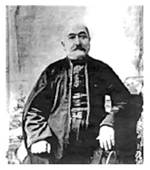Cave of Yerevan
Yerevan is 6000 years old (Viewpoint-suggestion concerning the age of Yerevan)
Capitals of Armenia
Yerevan of the beginning of the 20th century in photographs
Holidays in old Yerevan
Musical life of old Yerevan
Circus art in old Yerevan
Press of old Yerevan
Women’s education in Yerevan in XIX century
Health care in old Yerevan
Horse-drawn tram of Yerevan
Leather manufacture in old Yerevan
Crafts in old Yerevan
Trades people of old Yerevan


